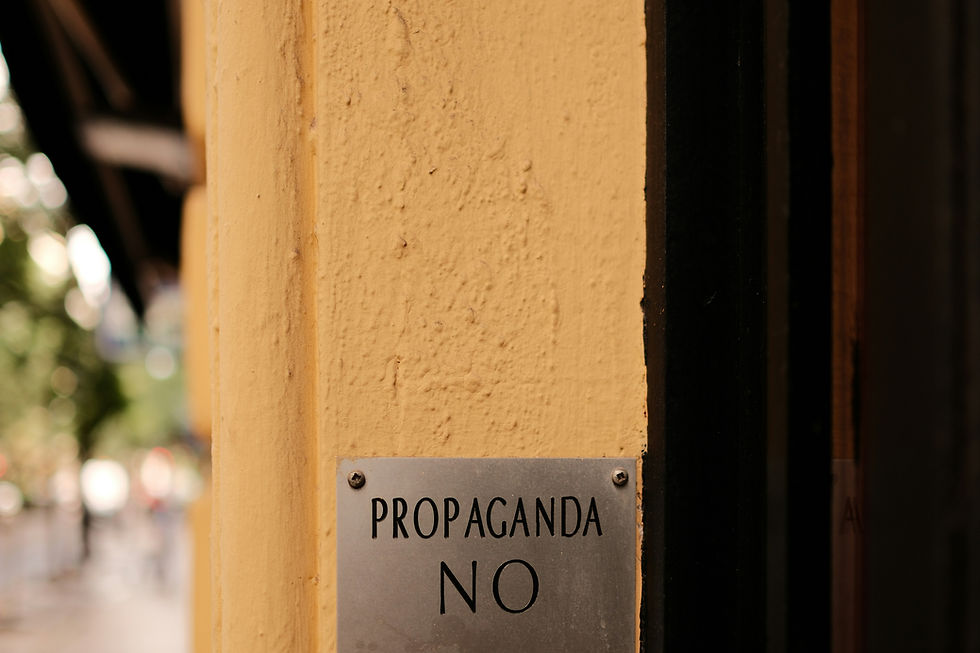1 000 and 4 000 days of using disinformation to hide war crimes and atrocities
- Res Publica

- Dec 27, 2024
- 4 min read
Over 1 000 days into Russia’s full-scale invasion of Ukraine, it is clear that the only thing more ubiquitous than Russian war crimes is disinformation used to hide it.

Since the start of the full-scale invasion of Ukraine, the Russian army has committed numerous war crimes. Multiple reports by the UN Independent International Commission of Inquiry on Ukraine demonstrate Russia’s complete and wilful disregard for international humanitarian law and human lives in general:
‘The Commission has documented violations, such as the illegal use of explosive weapons, indiscriminate attacks, violations of personal integrity, including executions, torture and ill-treatment, and sexual and gender-based violence. It also found that the rights of children have been violated.’
To be clear: the Kremlin seems to be proud of some of the war crimes and in no need to obfuscate them. The unlawful deportation of Ukrainian children to Russia, which earned Putin and his Commissioner for Children’s Rights Maria Alekseyevna Lvova-Belova arrest warrants from the International Criminal Court, has been dressed up as a humanitarian effort, with Russian state-controlled TVs spitting out feel-good stories about Russian families lining up to adopt orphans from Donbas.
No effort is made to hide the deliberate strikes on critical civilian infrastructure, such as electricity grids in Ukraine, which also amount to war crimes.
As for the rest – torture, rape, murder, and destruction – disinformation and information manipulation are the Kremlin’s trusted tools.
Lessons from the downing of MH17
One of the earliest and most notorious examples of Russia’s disinformation strategy to deny, deflect, and distract from its blame for international law violations was Moscow’s response to the downing of Malaysia Airlines Flight MH17. For over a decade, it unleashed a barrage of lies and conspiracy theories in hopes of flooding the information space with falsehoods and convincing audiences that ‘the truth can never be known’. In the end, conclusive international investigations confirmed Russia’s culpability, yet Moscow continues to deny responsibility, illustrating its entrenched reliance on disinformation to shield itself from blame.
A key tactic in these campaigns is denial. After atrocities committed by the Russian military in Bucha in the spring of 2022 came to light, Russian officials initially dismissed the evidence of mass civilian killings as fabrications, labelling photos and videos as ‘staged provocations’. Similarly, after the Kramatorsk railway station attack, they falsely claimed the missile used was no longer in Russia’s arsenal, despite clear evidence linking it to Russian forces. After bombing the maternity hospital in Mariupol, Russia’s Ministry of Foreign Affairs even accused the West of ‘information terrorism’ against Moscow, claiming that photos documenting the destruction were fake.
To make their outright denials of facts more believable, pro-Kremlin outlets frequently dive into made-up ‘technical details’ to create the illusion of trustworthy technical knowledge. The results are claims that are as outrageous are they are bizarre, for example alleging that the bodies of people killed in the downing of MH17 were ‘not fresh’ or, in the case of Bucha massacre, ‘still moving’. Therefore, the whole thing must have been ‘staged’. The Kremlin also used this tactic to deny war crimes in Syria.
Deflection is another logical step and an important tool in Russia’s manipulation playbook. In many instances, Moscow has blamed Ukrainian forces for the very atrocities it committed. For example, the bombing of a maternity ward in Mariupol was justified with baseless claims that ‘radical’ fighters were using it, a narrative tied to the Kremlin’s long-running lie about Nazis controlling Ukraine. The same with the bombing of the drama theatre in Mariupol that sheltered hundreds of civilians.
Distraction, especially via conspiracy theories, further muddies the waters. Pro-Kremlin sources introduce contradictory stories to create confusion, such as claiming Bucha victims were either actors, hired by a music video director, or pro-Russian collaborators executed by Ukrainian forces. By simultaneously promoting multiple contradicting and often absurd narratives, the Kremlin seeks not only to obscure the facts but to exhaust critical inquiry altogether.
At times the distraction efforts take the proportions of a full-blown information manipulation campaign. For example, following the Bucha massacre, Poland faced a large-scale troll attack which spammed Polish media, sent threatening letters to Polish decision-makers, and amplified the issue of the World War II-era Volyn massacre on Polish social media. All this was meant to drive a wedge between Poland and Ukraine at a critical point in time and minimise the Bucha atrocities with manipulative historical comparisons.
The cycle of violence and lies
The ultimate goal of such disinformation campaigns is to shield Russia from accountability for its war crimes. To that end, through its coordinated network of state-controlled outlets, diplomatic channels, and social media trolls, the Kremlin continuously rewrites reality to such an extent that any inquiry into facts becomes futile. It is not ‘Russia did not do it’, but rather ‘we will never know who did it’.
For the Kremlin, lies and violence are intertwined as violence obscures the lies and lies excuse the violence. That’s why all international efforts to bring the perpetrators of Russia’s war crimes to justice are so important: it is the only way to break the cycle of violence and lies.
Article and pictures first time published on the EUvsDisinfo web page. Prepared for publication by volunteers from the Res Publica - The Center for Civil Resistance.





Comments